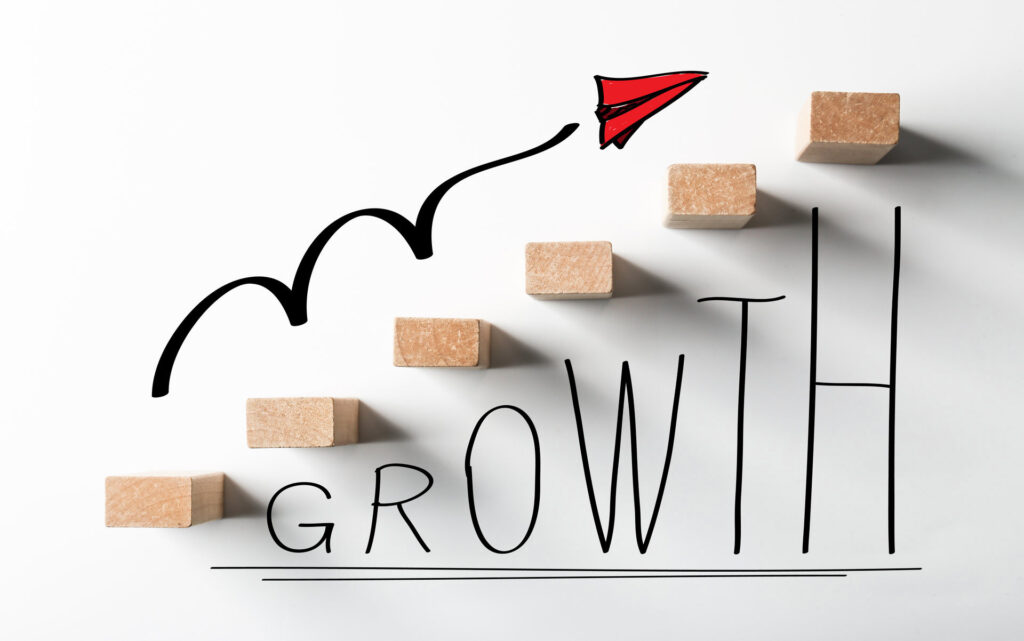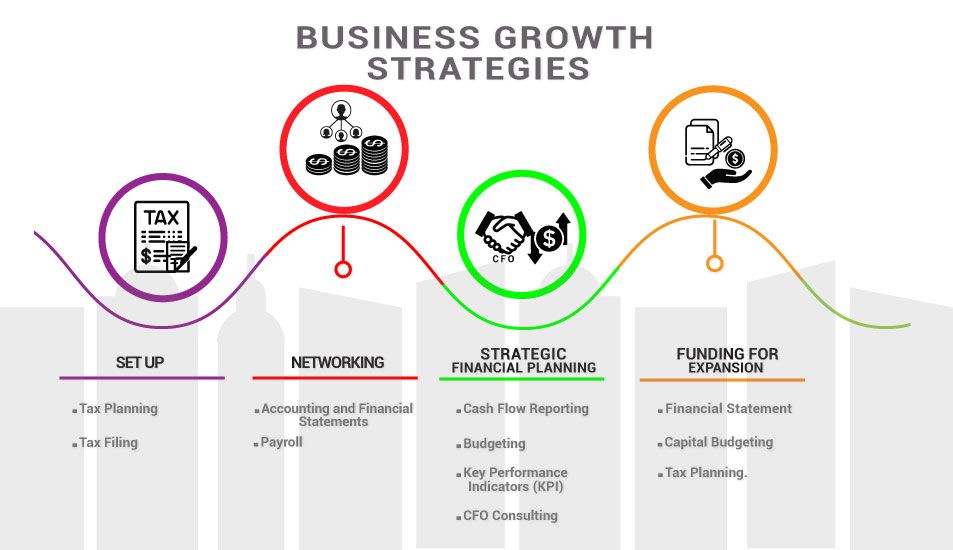Running a successful business is not just about starting—it’s about growing. Whether you’re a startup founder, small business owner, or established entrepreneur, you need clear and effective business growth strategies to thrive in today’s competitive market.
In this in-depth guide, we’ll explore the most effective strategies to grow your business in 2025—including digital approaches, customer-centric models, and smart financial practices. We’ll also share real-world examples, step-by-step actions, and tips for sustainable growth.
Why Growth Strategies Are Crucial for Any Business
Many businesses plateau after a certain point—not because their product or service is bad, but because they lack a growth strategy.
A business growth strategy gives you:
- A clear roadmap for expansion
- The ability to identify and seize opportunities
- A method to stay ahead of competition
- Insights into optimizing resources and processes
- Long-term stability and profitability
Now let’s explore the top business growth strategies that are relevant in 2025.

1. Market Penetration: Sell More to Your Existing Customers
One of the fastest and least risky ways to grow is to increase sales to your current customer base.
How to Do It:
- Offer volume discounts or loyalty programs
- Upsell or cross-sell related products
- Bundle services for more value
- Improve customer experience to boost retention
Example:
Starbucks uses loyalty rewards and exclusive app deals to keep customers returning more often.
2. Product Diversification: Add New Offerings
Adding new products or services allows you to reach a wider audience or fulfill more needs of your existing customers.
Ways to Diversify:
- Complementary products
- New versions or upgraded features
- Subscription models
- Seasonal or limited-edition offerings
Example:
Apple moved from selling computers to phones, wearables, and services—massively boosting its revenue streams.
3. Market Development: Enter New Markets
Reach out to new geographic locations or new customer segments to grow your sales.
Tactics Include:
- Localizing your marketing for different regions
- Expanding to international markets
- Targeting different demographics (e.g., B2B vs. B2C)
- Using platforms like Amazon Global or Alibaba
Example:
Netflix expanded globally by customizing content for different cultures and languages.
4. Strategic Partnerships and Collaborations
Partnering with other brands or influencers can help you expand reach and credibility quickly.
Types of Partnerships:
- Affiliate partnerships
- Co-branded products
- Joint ventures or strategic alliances
- Influencer marketing collaborations
Example:
Nike and Apple partnered for fitness-tracking gear, combining fashion and tech markets.
5. Invest in Digital Marketing
In 2025, if you’re not leveraging digital marketing, you’re leaving money on the table.
Channels to Focus On:
- Search Engine Optimization (SEO)
- Pay-Per-Click (PPC) Advertising
- Social Media Marketing
- Email Marketing
- Content Marketing and Blogging
Tip:
Consistent content builds trust, ranks on Google, and creates long-term traffic.
6. Improve Customer Experience
A satisfied customer is more likely to return—and recommend you to others.
How to Improve CX:
- Offer fast and reliable customer support
- Personalize communication
- Simplify your website and checkout process
- Collect feedback and implement it
Stats:
Studies show that 86% of buyers are willing to pay more for a better experience.
7. Automation and Technology Integration
Automating routine tasks allows you to scale operations without proportional increases in cost or time.
What You Can Automate:
- Email campaigns
- Customer service (chatbots)
- Inventory and order management
- Accounting and invoicing
Popular Tools:
HubSpot, Zapier, Mailchimp, QuickBooks
8. Optimize Pricing Strategy
Pricing isn’t just about profit—it’s a powerful psychological and competitive tool.
Strategies:
- Tiered pricing (basic, pro, premium)
- Psychological pricing ($9.99 instead of $10)
- Penetration pricing to enter new markets
- Bundling for perceived value
Pro Tip:
A/B test different pricing models to see what converts best.

9. Build a Strong Brand Identity
Your brand is how customers remember, trust, and relate to your business. A strong brand drives loyalty and long-term growth.
Branding Checklist:
- Clear brand voice and mission
- Professional logo and website
- Consistent visuals and messaging across channels
- Active social media presence
Example:
Coca-Cola’s branding hasn’t changed much in decades—because it works.
10. Hire the Right People
You can’t scale alone. Surround yourself with talent that brings skills, energy, and innovation to your business.
Tips for Building a Team:
- Hire based on potential, not just experience
- Outsource when needed (freelancers, agencies)
- Create a strong onboarding process
- Focus on culture fit and communication
11. Explore New Sales Channels
Don’t limit yourself to one platform. Diversify where and how you sell your products/services.
Examples:
- Start an Amazon or Etsy store
- Create a mobile app
- List services on platforms like Fiverr or Upwork
- Open a physical store or pop-up shop (if feasible)
12. Business Financing and Funding Options
Growth often requires capital. Explore funding options if your business needs financial support to scale.
Options to Consider:
- Angel investors
- Venture capital
- Business loans or lines of credit
- Crowdfunding platforms like Kickstarter or Indiegogo
13. Data-Driven Decision Making
Use data to track performance, identify trends, and make informed choices.
Metrics to Monitor:
- Customer acquisition cost (CAC)
- Customer lifetime value (CLV)
- Conversion rates
- Website traffic and bounce rates
- Profit margins
Tools to Use: Google Analytics, SEMrush, CRM dashboards
14. Sustainability and Social Responsibility
Modern consumers favor brands that care about the environment and community. Integrating these values into your strategy builds trust and long-term loyalty.
Ideas:
- Use eco-friendly packaging
- Support local charities
- Practice ethical sourcing
- Be transparent about impact
15. Continuous Learning and Innovation
Stay ahead by adapting quickly. The businesses that grow the most are those that keep learning and innovating.
How to Stay Sharp:
- Attend industry events and webinars
- Subscribe to market research or business news
- Join mastermind groups
- Take online courses (Udemy, Coursera)

Step-by-Step Growth Plan Example
Let’s say you run a small e-commerce store selling eco-friendly products. Here’s how you could apply some of the above strategies:
- Improve SEO to get more organic traffic
- Launch a new product line (diversification)
- Offer a loyalty program (customer retention)
- Collaborate with eco influencers (partnerships)
- Run retargeting ads on Facebook and Google
- Use chatbots to handle customer inquiries
- Collect email leads and start a newsletter
- Track your best-selling products with analytics
- Apply for a small business loan to expand inventory
- Share your sustainability efforts on social media
Final Thoughts
Business growth doesn’t happen overnight. But with a well-thought-out strategy, the right tools, and a commitment to delivering value, your business can grow steadily—and even exponentially.
Focus on your customers, keep learning, embrace innovation, and never stop experimenting. The strategies we discussed are not “one size fits all”—adapt them to your business, industry, and goals.
